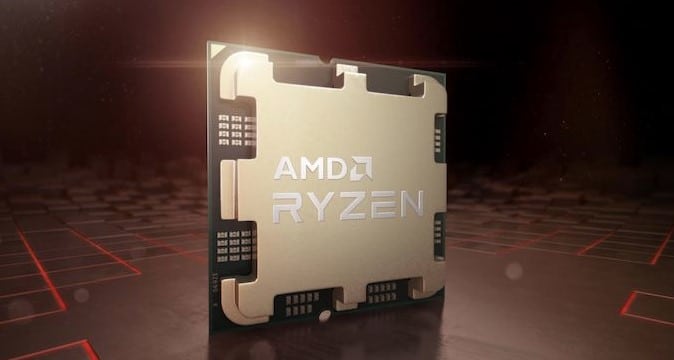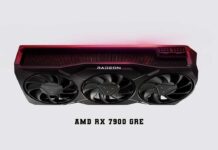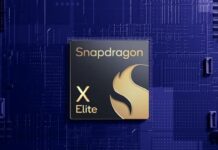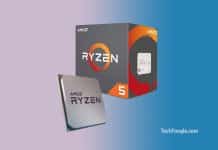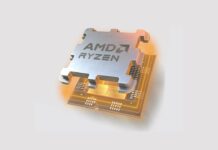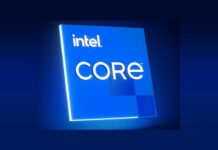AMD Zen 4 Ryzen 7000 Processors Launched; get the details on pricing and availability.
Gamers and power users have been waiting all year for AMD to release their new Ryzen 7000 series CPUs based on the Zen 4 architecture. Because they utilize the brand-new AM5 Socket, this unveiling has confirmed what we already knew: this year’s CPUs represent a major redesign. Along with significant speed and efficiency gains, this upgrade is expected to include cutting-edge connection capabilities including support for new DDR5 memory and PCIe 5.0 technology.
Table of Contents
Launch of the AMD Zen 4 Ryzen 7000 Processors
There are presently four CPUs in the newly revealed Ryzen 7000 series, which will be on sale starting on September 27. Starting at the top, we have the Ryzen 9 7950X, which has a 16-core/32-thread arrangement with a very high clock speed of 5.7 GHz and sells for $699.
The AMD Ryzen 9 7900X, which costs $550 and features 12 cores and 24 threads running at 5.6GHz, comes in second. The Ryzen 5 7600X, which costs $300 and has 6 cores, 12 threads, and a 5.3 GHz peak frequency, is currently the most economical variant. The Ryzen 7 7700X, which costs $400, is an 8-core alternative with clock rates up to 5.4 GHz.
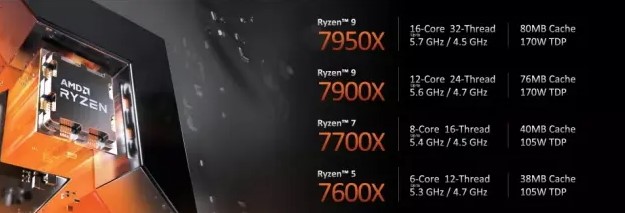
The new Ryzen 7000 series Processors are also built on a fresh new 5nm manufacturing technology, making them the first mainstream desktop processor to use this process node. AMD claims that this has resulted in an excellent gen-on-gen performance gain of up to 48% in certain benchmarks and a 13% improvement in instructions-per-clock (IPC).
Furthermore, moving to a lower production node has allowed AMD to increase clock rates to 5.7 GHz, which is 800 MHz higher than the Zen 3 CPUs (4.9 GHz).

Performance of AMD Zen 4 Ryzen 7000 Processors for gaming
A few game benchmarks were also displayed during the press presentation by AMD’s trailblazing CEO Lisa Su, and at first glance, they appeared to be rather remarkable. Despite the small number of games available, AMD demonstrated that the Ryzen 9 7950X delivered gains of up to 35% over their previous flagship 5950X in games like Shadow of the Tomb Raider.

However, AMD’s boasts regarding the gaming performance of its Ryzen 5 7600X CPU made for a more compelling contrast. AMD said that their $300 mid-range Ryzen 5 7600X CPU was, on average, 5% quicker than the Core i9 12900K while utilizing the same RAM setup. AMD used gaming benchmarks from games like F1 2022 to support this claim.
You should view the aforementioned results with caution, as you should with any vendor-provided benchmarks. The i9 12900K, the world’s fastest gaming CPU at the moment, sells for $600, so if the performance in the real world is even remotely comparable to this, it will be an astounding achievement.

Zen 4 Enhancements for Productivity and Efficiency
The performance in terms of productivity and efficiency seems to be the second outstanding feature of the Zen 4. When comparing the 16-core 7950X to the 16-core 5950X from the previous year, AMD is demonstrating increases of up to 48% across a variety of rendering workloads including V-Ray and Corona. This is particularly significant considering there has been no change in the number of core counts, which means that the gain has mostly been accomplished by increasing core frequency in addition to the extra IPC increase (13%).
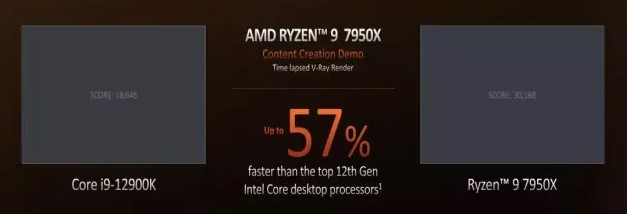
AMD demonstrated the 7950X crushing the Core i9-12900K by up to 57% in V-Ray, giving AMD Ryzen 7000 CPUs lots of performance buffers versus 13th-Gen components due out shortly assuming these performance claims are correct across further workloads.
In most cases, such generational advancements come at the expense of power consumption due to higher core speeds, however, this isn’t the case with Ryzen 7000 series CPUs. For example, AMD claims that it outperforms the 12th-generation Intel Core i9-12900K in terms of performance per watt, indicating that it would use far less power than the Intel CPUs. This indicates that the 7950X’s 170W TDP, albeit greater than the 5950X from the prior generation, is more effective. This indicates that performance is increasing above the previous generation by a significant margin.
AMD Motherboards and Chipsets for Socket AM5
AMD also showcased its new socket AM5 architecture during the event, which will allow AMD CPUs to handle PCI-E gen 5 and DDR5 memory for the first time. According to their claims, the platform would have a maximum of 24 PCI-E 5.0 lanes and DDR5-6400 memory speeds. AMD also underlined that they are committed to the AM5 platform going forward, with plans to maintain it through at least 2025.

According to AMD, there will be four new chipsets available for the new Socket AM5 motherboard family, allowing consumers to select the precise characteristics they need. The newly unveiled B650E and B650 chipsets won’t be available until later in October; the X670 and X670E chipsets will be available right away.
The M.2 and GPU slots on B650E motherboards will both support PCIe 5.0, although PCIe 4.0 is available in all other slots on normal B650 motherboards. On the other hand, the Extreme will simply be the best board with the greatest features and will support more PCIe 5.0 lanes for graphics and storage than the non-Extreme variants.
Pricing has not been announced, save that entry-level motherboards are likely to start at $125, which is somewhat more than previous-generation gear. And it is the cost that we believe distinguishes AMD in this generation. Not only have the platforms (both CPUs and motherboards) gotten slightly more costly, but the fact that the new processors demand DDR5 only adds to the overall up-front cost. DDR5 memory is currently more costly than DDR4 memory. A 32GB DDR5-5600 RAM kit from any reputable vendor now costs around $170, compared to $100 for DDR4-3600.
The Future of AMD with the AMD Ryzen 7000
We have now reached the next stage of AMD’s amazing recovery story with the introduction of the new AM5 platform and Ryzen 7000 CPUs. The new CPUs are expected to outperform Intel’s next-generation 13th-generation processors in terms of performance and power efficiency, and propel AMD to the next level in terms of performance and power efficiency. Furthermore, the fact that AMD intends to maintain the AM5 socket until 2025 ensures that the platform will be a secure long-term investment for those wanting to buy a new computer. However, this emotion should be dampened in the short term because the AM5 platform will still be a pricey upgrade, putting it out of reach for the average customer.

